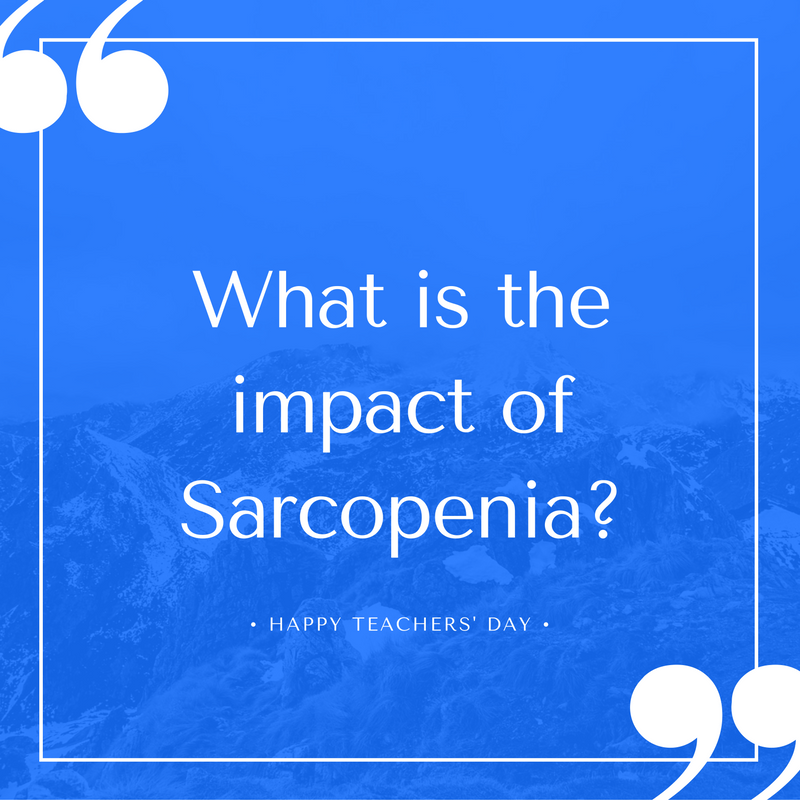We are bombarded with so much conflicting information when it comes to health. We all know that we are mortal beings, but what we are not certain about is what adds to our longevity? Some people can’t have peace in their 50s and 60s due to various health issues. On the other hand, we hear about those who managed to finish a marathon or maintain a chiseled body in their 80s. What does this mean? Well, the experiences and lifestyles of these people can teach us that Sarcopenia can be prevented through fitness and regular physical exercise.
What is Sarcopenia?
Sarcopenia is a medical condition that signifies the decline of health. In other words, it is a sign of aging that includes a slow and gradual loss of muscle and skeletal mass after the age of 30. Sarcopenia affects all of us, not as a pathological change (syndrome or disease), but rather as a natural physiological change. The effects of Sarcopenia can be suppressed through strength training, enabling us to maximize our vitality.
Muscle Density
We lose more than half of our muscle mass by the time we reach our seventies. This explains why we easily get tired and feel weak as we grow older. Strength training will help you keep your muscles dense and active (and slow down the bone loss process), preventing the occurrence of Sarcopenia. According to a study conducted by the Northern Ireland Centre for Diet and Health (University of Ulster), for which 131 premenopausal and 82 postmenopausal women volunteered, the results showed that the relationship between relative skeletal muscle index (RSMI), bone mineral density (BMD) and the risk of osteoporosis can be very well mediated through participation in physical activities. The women who took part in this study noticed significant improvement of their hips and spine after the one-year strength-training program. The levels of testosterone, which is crucial for boosting metabolic activity and building lean mass, are on the increase with people who lift weights, which is another reason to master the deadlift and bench press.
Bone Density
During midlife, bone loss speeds up for both men and women. It is an unavoidable natural occurrence, so it’s something that you shouldn’t be scared of. However, you can fight it and postpone its effects. When it comes to bone density, male and female bodies differ. Men have a larger skeleton, thus bone loss starts later and progresses slowly. On the other hand, most women go through a period of rapid hormonal changes when they experience a significant and sharp drop in their estrogen levels. It is said that women, aged 65 to 70, who suffer a fracture around the hip-joint are more likely to die within a year than women of the same age who did not suffer a fracture.
Diet and Strength Training
A necessary part in the battle against Sarcopenia is diet. It enables us to improve our results and endure hardships by supplying our body with the best possible nutrients. Protein is the building block of a muscle. Therefore, have an adequate intake of protein every day so your muscles can regenerate.
As for creating your strength training program, there are two essential types of training – aerobic and resistance. Aerobic training, although great for flexibility, is not enough for preserving health of an aging adult. For completing the “age-defying” program you must perform resistance exercises. In this way, you will improve your posture, bone strength, and immune response. Find a training routine that suits you best in order to prepare your body against gradual degeneration.
Digital Health
Even though laziness is among the top “syndromes” today, caused by the digital revolution and high-tech gadgets that have seduced people, it can also help you live right and be active. There are various health and fitness apps that help you track your health and training progress and design your own exercising routine, as well as apps for exercise motivation. Laziness is a condition that can be treated much easier than Sarcopenia and it all depends on our perspective of it and the way we use these apps and gadgets.
Staying motivated to work out regularly, especially when you reach the old age, can be a problem. Some people simply need a little push in order to activate themselves and start working out, to maintain their health. If you are a 60-year-old reading this article, you wouldn’t be here if there wasn’t for technology, would you? Create a training and nutrition program, get on the course, and start moving. It will do you good.

